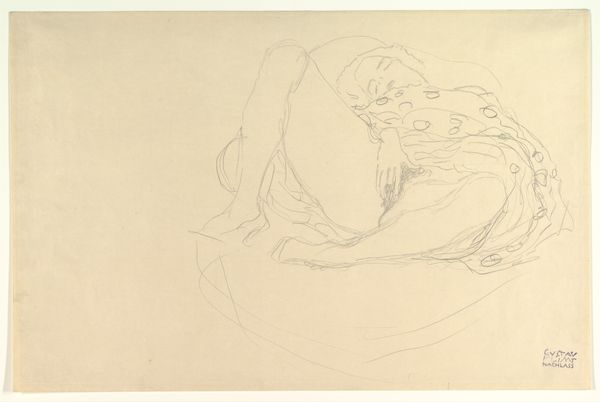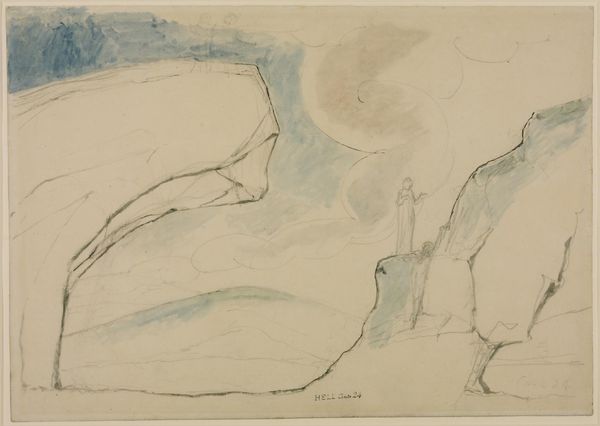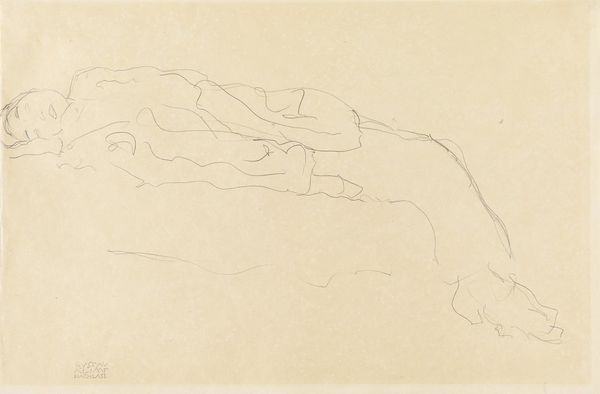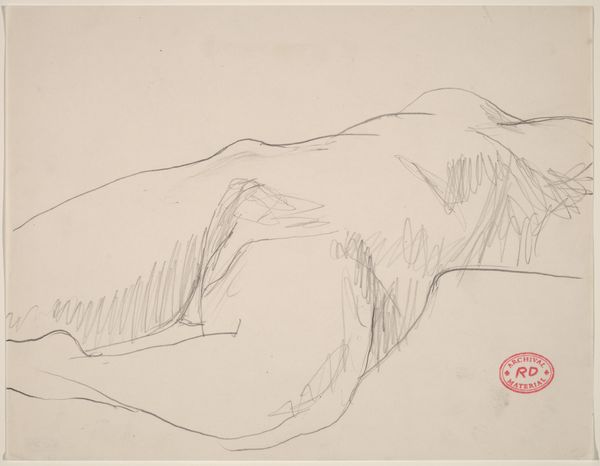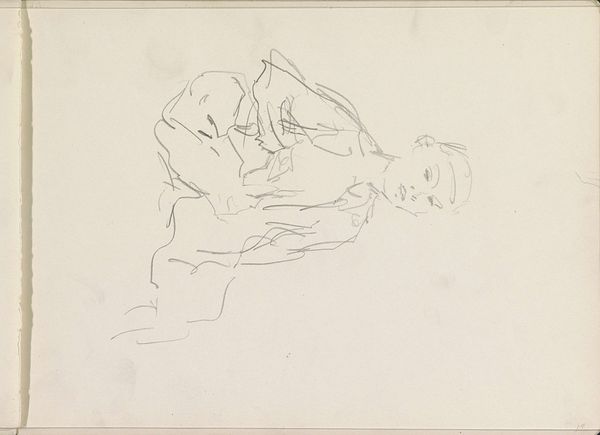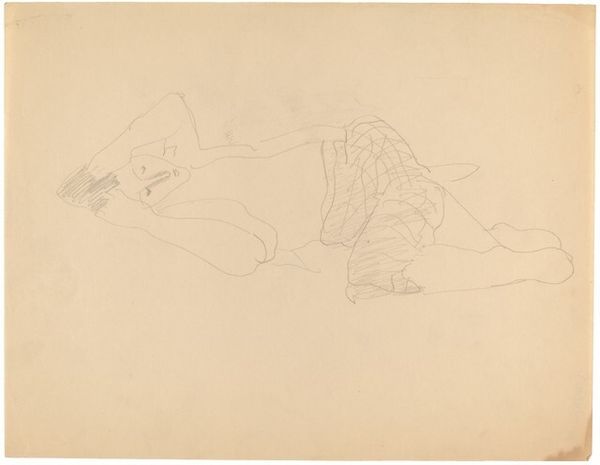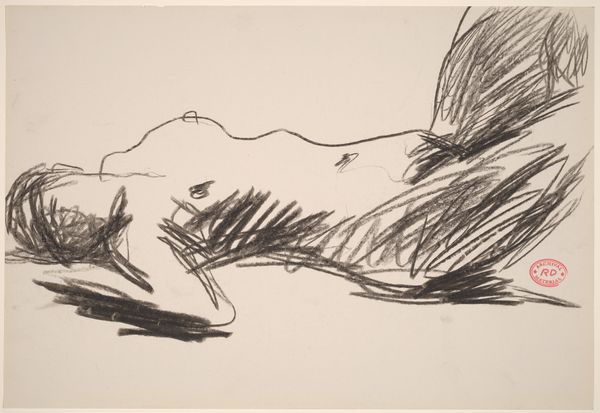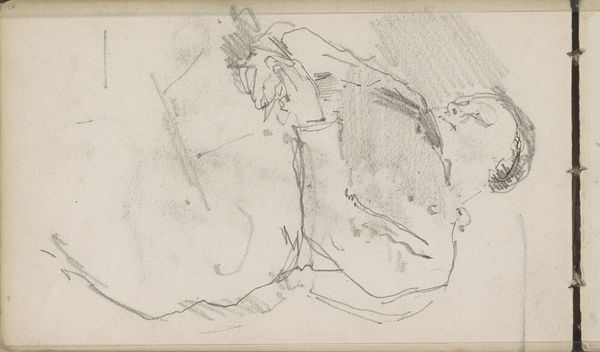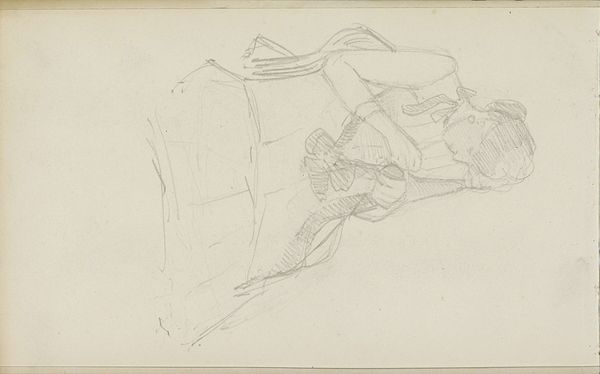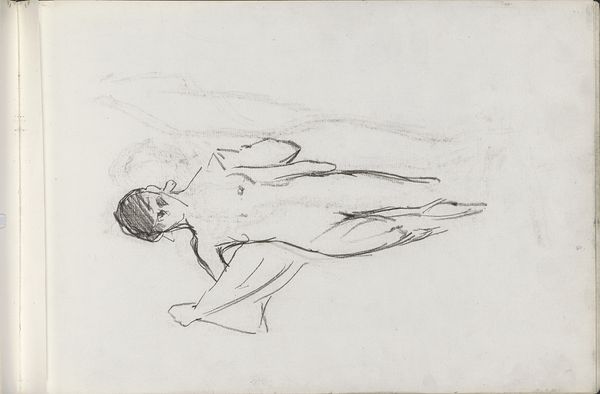
drawing, pencil
#
portrait
#
drawing
#
art-nouveau
#
pencil
#
nude
Dimensions: Sheet: 14 3/4 × 22 1/2 in. (37.5 × 57.2 cm) Frame: 23 × 29 × 1 1/2 in. (58.4 × 73.7 × 3.8 cm)
Copyright: Public Domain
Editor: This is "Reclining Nude," a pencil drawing created by Gustav Klimt between 1907 and 1917, currently housed at The Met. The loose, flowing lines give it a very relaxed, almost dreamy quality. What do you notice about the formal elements of this piece? Curator: Immediately striking is the economy of line. Observe how Klimt delineates form with minimal strokes, suggesting volume and depth through subtle variations in pressure and direction. Consider the use of negative space, not merely as absence, but as an active component in defining the figure’s contours. Editor: So, the "unfinished" look is intentional? Curator: Precisely. The absence of shading and meticulous detail forces the viewer to actively participate in constructing the image. Note, for example, the almost diagrammatic rendering of the hands, contrasted with the softer modeling of the torso. What does this juxtaposition suggest to you? Editor: Maybe a tension between observation and feeling? The hands seem more studied, the torso more freely expressed. Curator: An astute observation. Furthermore, analyze the composition itself. The figure is positioned diagonally across the picture plane, creating a dynamic tension. This disequilibrium, however subtle, contributes to the overall mood of languor and introspection. How do you think the effect would change if the figure were horizontal and centred? Editor: It would feel much more stable, maybe even static, less intimate. It seems like every choice here—the line, the composition—works together to create this feeling of ephemeral beauty. Curator: Indeed. It reveals the potency of pure line to evoke form, emotion and even thought. An essential drawing from an artist mostly renowned for decorative painting. Editor: This makes me think differently about how I approach a sketch - to see it as a complete and very nuanced form.
Comments
No comments
Be the first to comment and join the conversation on the ultimate creative platform.
